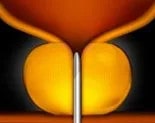UroLift Treatment for Enlarged Prostate
What is Urolift?
The Urolift procedure is an effective treatment of Benign Prostatic Hyperplasia (BPH) or Enlarged Prostate. Tiny implants are applied to lift and hold the enlarged prostate tissue out of the way so it effectively holds the urethra open.
UroLift offers fast relief of symptoms and a significant improvement in the quality of life.
What are the Advantages of the UroLift Procedure?
The key advantages of UroLift procedure in the treatment of BPH are:
- UroLift is suitable for most BPH patients, with few contraindications
- Great alternative to BPH medications due to its rapid and durable relief with minimal complications
- There is no cutting, heating or removal of prostate tissue.
- The UroLift procedure has no impact on your sexual function, and
- Typically the UroLift procedure is performed in a day surgery within a couple of hours.
Who Can Benefit From Urolift?
Good candidates are:
- Male over 40 years of age
- Have symptoms relating to BPH, and
- Who are not allergic to nickel, titanium or stainless steel.
UroLift Treatment for Benign Prostatic Hyperplasia
The UroLift approach to treating Enlarged Prostate (BPH) simply that lifts and holds the enlarged prostate tissue so it no longer blocks the urethra.
The procedure is a minimally invasive and is typically performed under general anaesthesia in a day surgery. It takes less than an hour. Patients usually return home the same day or next morning without a catheter.
Enlarged Prostate
slows or blocks urine flow

The delivery device is placed into the urethra

Small implants are used to hold the urethra open

Device removed leaving permanent implants in place

Pre UroLift Assessment
In order to prepare for the surgery, the patient should be adequately counselled to ensure that the informed consent obtained is fully understood.
Dr Kim will
- Take your medical history to assess your symptoms and suitability
- Perform a physical examination (may include Digital Rectal Exam (DRE)),
- Perform some preoperative tests
Preoperative Tests may include:
- IPSS (International Prostate Symptom Score)
- PSA test
- Renal Tract Ultrasound
- Uroflowmetry study and
- Urinalysis
Before surgery, Flexible Cystoscopy may also be performed to assess the configuration of prostate enlargement and suitability for Urolift as well as exclude other pathology (ie. bladder tumour).
During the UroLift Procedure
The actual UroLift procedure usually takes 30 minutes. This is usually performed under general anaesthesia.
Medication to feel more comfortable may also be used to help manage the procedure.
Recovery After UroLift Procedure
As with any medical procedure, individual results may vary. Typically, no catheter and no overnight stay is required post-treatment. Patients typically go home the same day.
There is minimal downtime after the Urolift procedure and many patients experience symptom relief in as early as 2 weeks.
Patients may experience some urinary discomfort during the recovery period.
Risks and Side Effects After a UroLift Procedure
The most common side effects can include
- blood in the urine,
- some pain or discomfort when urinating,
- some increased urge to go and
- discomfort in the pelvis
While not normal, these post-operative issues or side effects typically resolve within two to four weeks after the procedure.
What if BPH Is Left Untreated
If left untreated, BPH can lead to the bladder not empty completely, this raises the risk of developing urinary tract infections (UTIs).
Other problems can also develop over time, including
- permanent bladder damage,
- bladder stones,
- blood in the urine,
- incontinence, or
- urinary retention.
Alternative Treatment Options To UroLift
Alternative treatments for BRP include:
- Watchful Waiting
- Medications for BPH Treatment
- Water vapour or Rezum Thermotherapy
- Laser (Greenlight or HoLEP) Therapy
- Trans Urethral Resection Of The Prostate – TURP
- Trans Urethral Incision Of The Prostate (Also known as Bladder neck incision) – TUIP
- Trans Urethral microwave therapy – TUMT
- Simple Prostatectomy – Open or Robot-assisted
- Embolisation of Prostate Arteries
